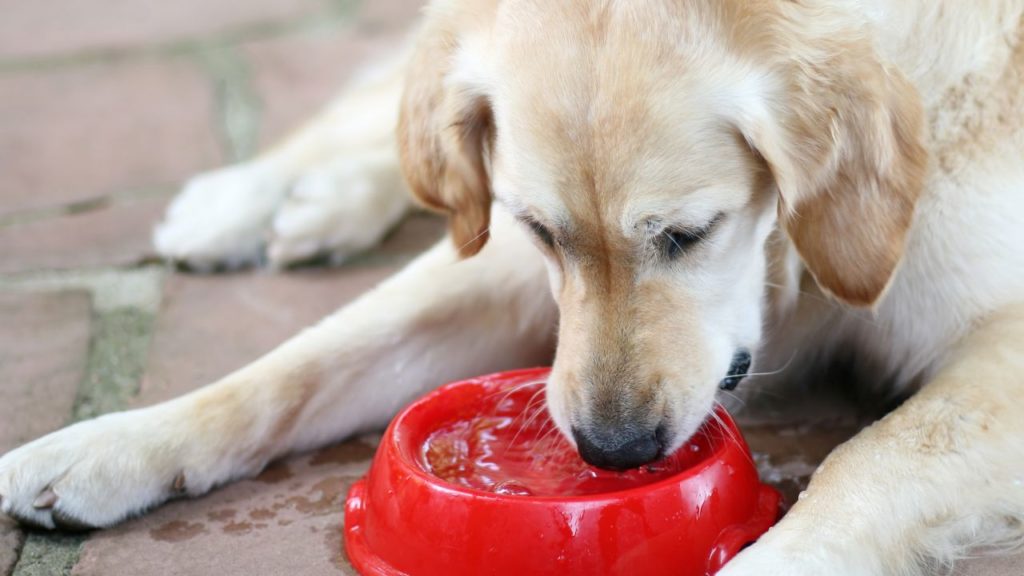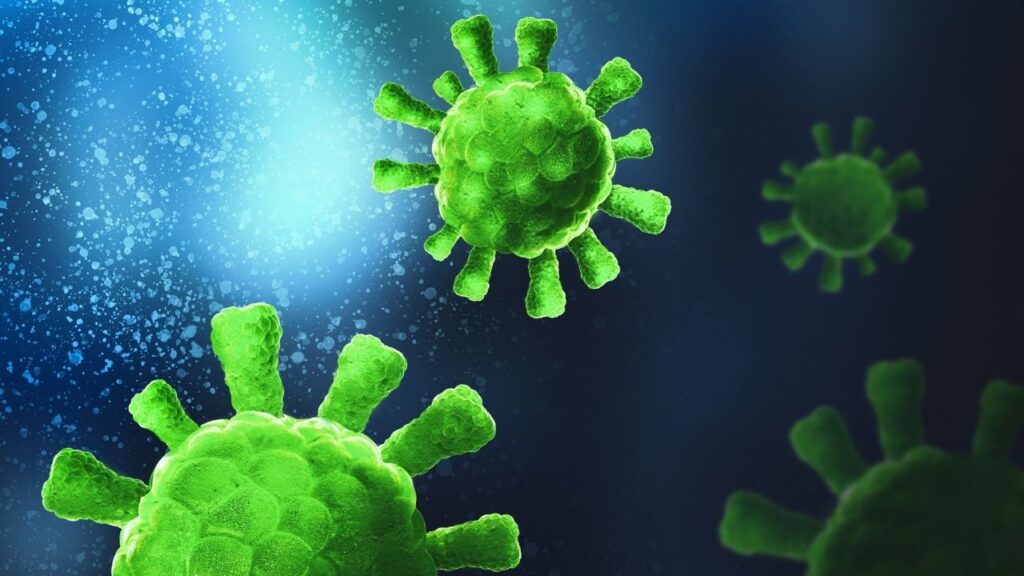Nowadays, humans and dogs share their living space and so our pets are exposed to many of the same environmental pollutants as we are, like tobacco smoke, smog, paints and pesticides. Fortunately, our pets’ risk is reduced when we take steps to reduce our own risk of exposure, and the incidence of cancers in pets from pollution is still very low.
Key Takeaways
- Several types of pollution increase the risk of cancer.
- Pollution poses risks to us and also to our dogs.
- Air pollution and drinking water pollution both present risks for dogs.
Environmental Causes of Cancer
Environmental pollutants are known to influence the development of cancers in humans. But we also share our living spaces with our dogs, and they develop many of the same cancer types as humans.
Because of this, our dogs are also at elevated risk for certain cancer types from living in areas with excessive air and water pollution.1,2 There is also pollution inside the home, so even dogs kept indoors may be exposed to household pollutants. In fact, they may even have a slightly higher risk than their owners, who spend time away from the home.12
Pollutants Suspected to be Carcinogens
There are many pollutants out there that we know or suspect increase the risk of cancer development.
Tobacco Smoke
For dogs who live with cigarette smokers, a weak association has been established between tobacco smoke exposure in the home and nasal cancers. The risk appears to rise for dogs with medium length and long noses.12
In general, veterinarians do not recommend smoking any substance, including marijuana or vaping, around dogs.
- According to the CDC, marijuana secondhand smoke contains many of the same toxins found in cigarettes, and some in higher amounts.16
- According to the American Heart Association, secondhand vape mist poses a similar risk to cigarettes, with heavy metals and known carcinogens such as benzene being delivered via the ultrafine particles.17
Coal and Kerosene
Dogs have an increased risk of getting cancer of the lung and nasal cavity if living around coal burning sources and kerosene heaters.12 This is obviously a health risk for humans, too.
Pet dogs may even serve as “sentinels” that human members of the household are also at risk.5 Sentinels in the armed forces watch out for danger so the company is ready when it arrives. In a medical sense, sentinels are animals that experience trouble before their human companions do. Both dogs and cats are considered sentinel animals for humans, which means if cancer risks rise for them, they are probably also rising for us. The canaries in the coal mines were literally used as sentinel animals.
Drinking Water Contaminants
Tap water contaminants may contribute to increased incidence of bladder cancer (urothelial carcinoma) in dogs.7
Water Disinfectants
Trihalomethanes are by-products produced during water treatment. Unfortunately, exposure to these disinfection chemicals in tap water may increase the risk of bladder cancer in humans, and most water filters don’t catch them. This may not be true for bladder cancer in dogs at the concentrations they ingest.8
Air Pollution, Acid Rain, and Smog
Research has found that Boxers with lymphoma are more likely to live in counties exceeding the EPA’s ozone limits for air pollution.7 This suggests that pollution may be one of the causes of lymphoma in dogs.
Lead, benzene, and asbestos are few of the common air pollutants that have been identified as carcinogens.11,15
Insecticides
Canine bladder cancer (urothelial carcinoma) and lymphoma are associated with the use of insecticides in the household (and also with living in areas with high industrial activities).1,2
Scottish Terriers in particular are known to be at a higher risk of developing bladder cancer. However, a study showed that using flea and tick products containing fipronil or imidacloprid did NOT show an increased risk of transitional cell carcinoma.10 These products, which are approved for use in dogs, are generally safer than insecticides intended to be used in the house or yard.
Herbicides
Study results suggest that exposure to lawns or gardens treated with herbicides was associated with an increased risk of bladder cancer in Scottish Terriers. Owners of Scottish Terriers should limit their dogs’ access to lawns or gardens treated with herbicides such as Roundup and 2,4-D.9
Perfluorochemicals (PFCs) and Polybrominated Diphenyl Ethers (PBDEs)
PFCs are a synthetic compound common in stain, grease, and water repellants for furniture, fabrics, and kitchenware.4 PFCs are associated with cancers in mice and rats.4
PBDEs are flame retardants used in furniture cushions and many synthetic fabrics. They are also used in the outer plastic housing of many common household goods like televisions and computers. PBDEs have been linked to significant defects in lab animals including thyroid and liver tumors in rodents and decreased immune function in marine mammals.4
Research in dogs is still early, but toxicologists at the Environmental Working Group in Washington, D.C. have done an initial study looking into these chemicals and their effects on dogs. The team analyzed blood samples from 20 pet dogs and found that pooled dog samples showed high levels of PBDEs and PFCs.4 More research will need to be done to determine how these levels can impact cancer risk.
Vinyl Chloride
Vinyl chloride is a colorless gas that is released during the production of polyvinyl chloride (PVC) and vinyl. Vinyl chloride is a known carcinogen. Humans and dogs can be exposed to vinyl chloride through the air if they live near a facility that manufactures PVC or vinyl products or through contaminated groundwater.13
Asbestos
Although a very rare form of cancer, dogs can develop primary lung cancer and mesothelioma after long term exposure to building materials containing asbestos. Dogs owned by people who worked in the asbestos industry are at greater risk for developing mesothelioma, likely because people have asbestos on their clothing when they come home from work.14
Does Pollution Always Cause Cancer?
It is likely that a combination of environmental and genetic factors contribute to the development of most cancer types in dogs.1 One single exposure is unlikely to cause cancer on its own.
Development of cancers after exposure to environmental pollutants is dependent on multiple factors, including:
- the type and concentration of the contaminant
- length of exposure
- the ability to neutralize the chemical once inside the body
Enzymes in a dog’s liver like glutathione-S-transferase (GST) assist in deactivating environmental hazards and preparing them for safe excretion from the body. In people, there are variations in GST enzymes due to genetic differences, and so their capacity to deactivate environmental hazards is also different. Two people exposed to the same pollutant may have different risks of developing cancer because of genetic differences in GST and other detoxifying enzymes.3
Pollution is more likely to contribute to cancer risk if your dog lives in an area with a lot of environmental pollution, especially if he also has other risk factors for developing cancer.
Risk Factors
Several risk factors can increase the chance that your dog might develop cancer because of pollution:
- Prolonged exposure to environmental pollutants, even in small amounts
- Living in or near industrial areas
- Chewing non-edible items that contain carcinogens
- Breed or mix of breeds with genetic cancer risk, such as Golden Retrievers or Boxers
- Living with a smoker
- Living near agricultural areas
- Immune system disorders
No single risk factor is likely to cause cancer by itself. However, having multiple risk factors can increase your dog’s risk.
How to Reduce Pollution Risk
Increased awareness about chronic household exposures to pollutants is important for dog lovers. While you can’t control everything, there are steps that you can take to counteract risk. Minimizing exposure to pollutants may help in decreasing the occurrence of certain cancers.3
Here are some things to consider:
- Enlist help to stop smoking or help a family member stop smoking.
- Reduce or eliminate the use of herbicides, especially if you have a Scottish Terrier.
- Reduce or eliminate the use of insecticides.
- Filter drinking water, especially if you live in an area with a lot of industrial activity.
- Use an air purifier in your home, especially if you live in an area with a lot of industrial activity.
- Replace furniture and rugs containing synthetic flame retardants. Some naturally flame-resistant alternatives include wool, cotton, and hemp.
- Choose products that have not been treated with water and stain repellants, especially if your dog is a chewer.
- Replace plastic dog bowls with ceramic or metal bowls.
- Avoid the use of coal and kerosene heaters.
- Move away from areas with a lot of pollution if possible, and support legislation that regulates manufacturing and other sources of pollution.
- Albright SM. The role of pollution in canine cancer. The Role of Pollution in Canine Cancer. https://www.akcchf.org/educational-resources/library/articles/the-role-of-pollution-in.html. Published February 7, 2022. Accessed April 24, 2023.
- Smith N, Luethcke KR, Craun K, Trepanier L. Risk of bladder cancer and lymphoma in dogs is associated with pollution indices by county of residence. Veterinary and Comparative Oncology. 2021;20(1):246-255. doi:10.1111/vco.12771
- Lepisto M. New Canine Study Investigates Cancers and Exposure to Environmental Chemicals – University of Wisconsin School of Veterinary Medicine. School of Veterinary Medicine. Published April 9, 2020. Accessed December 9, 2022. https://www.vetmed.wisc.edu/canine-study-cancers-chemicals/1.
- Environmental Working Group. Polluted Pets – High Levels of Toxic Industrial Chemicals Contaminate Cats And Dogs. Environmental Working Group. https://www.ewg.org/research/polluted-pets. Published April 17, 2008. Accessed April 12, 2023.
- Bukowski JA, Wartenberg D, Goldschmidt M. Environmental causes for sinonasal cancers in pet dogs, and their usefulness as sentinels of indoor cancer risk. Journal of Toxicology and Environmental Health Part A. 1998;54(7):579-591. doi:10.1080/009841098158719
- Reif JS, Bruns C, Lower KS. Cancer of the Nasal Cavity and Paranasal Sinuses and Exposure to Environmental Tobacco Smoke in Pet Dogs. American Journal of Epidemiology. 1998;147(5):488-492. doi:10.1093/oxfordjournals.aje.a009475
- Smith N, Luethcke KR, Craun K, Trepanier L. Risk of bladder cancer and lymphoma in dogs is associated with pollution indices by county of residence. Veterinary and Comparative Oncology. 2021;20(1):246-255. doi:10.1111/vco.12771
- Backer LC, Coss AM, Wolkin AF, Flanders WD, Reif JS. Evaluation of associations between lifetime exposure to drinking water disinfection by-products and bladder cancer in dogs. Journal of the American Veterinary Medical Association. 2008;232(11):1663-1668. doi:10.2460/javma.232.11.1663
- Glickman LT, Raghavan M, Knapp DW, Bonney PL, Dawson MH. Herbicide exposure and the risk of transitional cell carcinoma of the urinary bladder in Scottish Terriers. Journal of the American Veterinary Medical Association. 2004;224(8):1290-1297. doi:10.2460/javma.2004.224.12901.
- Raghavan M, Knapp DW, Dawson MH, Bonney PL, Glickman LT. Topical flea and tick pesticides and the risk of transitional cell carcinoma of the urinary bladder in Scottish Terriers. Journal of the American Veterinary Medical Association. 2004;225(3):389-394. doi:10.2460/javma.2004.225.3891.
- Causes of Cancer – Special Pet Topics. Merck Veterinary Manual. https://www.merckvetmanual.com/special-pet-topics/cancer-and-tumors/causes-of-cancer 1.
- Moore AS. Environmental causes of cancer in pets – WSAVA2007. World Small Animal Veterinary Association World Congress Proceedings, 2007. https://www.vin.com/apputil/content/defaultadv1.aspx?pId=11242&catId=31932&id=3860738&print=1#:~:text=Dogs%20have%20been%20shown%20to%20have%20an%20increased%20risk%20of. Accessed April 24, 2023.
- Vinyl chloride (VC) – US EPA. Vinyl Chloride (VC) TEACH Chemical Summary. https://archive.epa.gov/region5/teach/web/pdf/vc_summary.pdf. Published October 1, 2007. Accessed April 25, 2023.
- Mesothelioma in Dogs. www.petmd.com. https://www.petmd.com/dog/conditions/cancer/c_multi_mesothelioma
- Air Pollutants. Centers for Disease Control and Prevention. https://www.cdc.gov/air/pollutants.htm. Published November 21, 2022. Accessed April 12, 2023.
- Secondhand marijuana smoke. Centers for Disease Control and Prevention. https://www.cdc.gov/marijuana/health-effects/second-hand-smoke.html. Published October 19, 2020. Accessed April 24, 2023.
- Gunnerson T. In secondhand vape, scientists smell risk. American Heart Association News. https://www.heart.org/en/news/2022/05/31/in-secondhand-vape-scientists-smell-risk. Published January 24, 2023. Accessed April 24, 2023.
Topics
Did You Find This Helpful? Share It with Your Pack!
Use the buttons to share what you learned on social media, download a PDF, print this out, or email it to your veterinarian.






